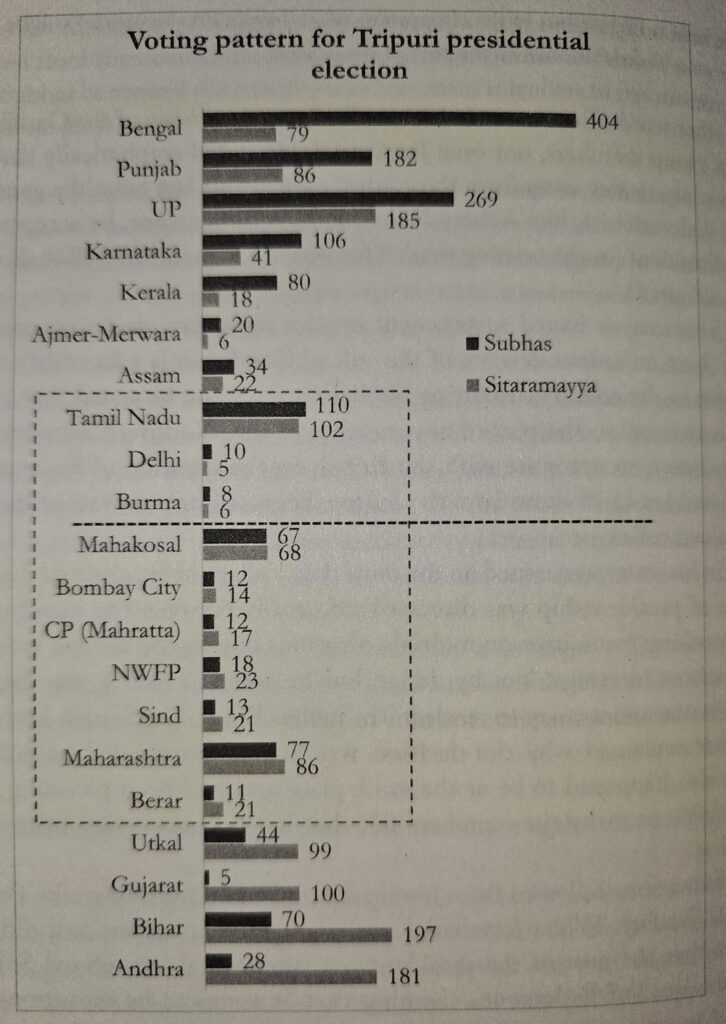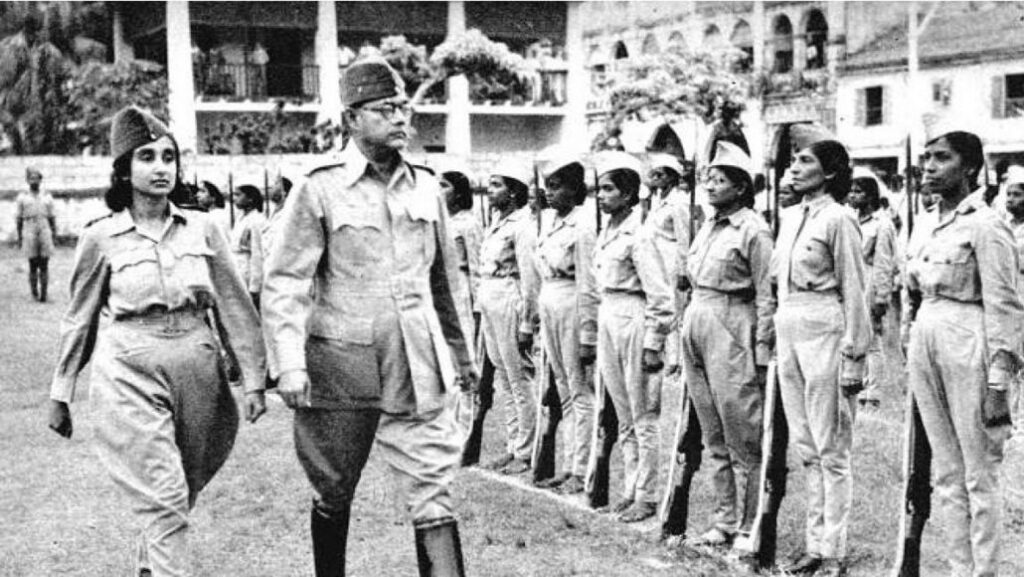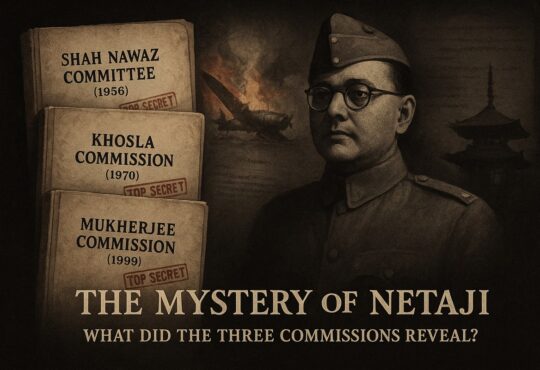
Resignation of Subhas Chandra Bose from Congress Presidency in 1939
Subhas Chandra Bose’s resignation from the Congress presidency in 1939 was a turning point in India’s freedom struggle. It highlighted the deep ideological rift between Bose’s radical vision and Mahatma Gandhi’s moderate, non-violent approach. The conflict between Bose and Gandhi had been brewing for years, but it intensified in 1938-39 over key political decisions, ultimately forcing Bose to step down.
This article explores the root causes of this conflict, the political maneuvering within Congress, and the events that led to Bose’s resignation in 1939.
The Initial Conflict: Coalition Governments in 1938
A significant disagreement surfaced in 1938 concerning the formation of coalition governments in various provinces. Subhas Chandra Bose was keen on establishing a coalition government led by Congress to replace A.K. Fazlul Huq’s ministry in Bengal. He firmly believed that allowing Huq’s government to continue in power would strengthen communal politics and weaken Congress’s influence in the province.
Bose argued, “It is imperative, in the national interest, that we should pull down the Huq ministry as early as possible. The longer this reactionary ministry remains open, the more communal will the atmosphere of Bengal become, and the weaker will the Congress grow.“
However, Gandhi opposed this strategy. He believed that the Congress should not aim to oust Huq’s ministry, stating, “I am more than ever convinced that we should not aim at ousting Haq’s ministry.” Gandhi’s reluctance to support Bose’s plan created a rift between the two leaders.
Bose’s vision extended beyond Bengal. He believed that coalition governments could be formed in Punjab and Sindh as well, bringing all 11 provinces under Congress administration. This, he argued, would strengthen the party’s claim to represent the people of British India and mitigate the absence of a settlement with the Muslim League. Bose even offered to take responsibility for forming coalition governments in these provinces, emphasizing that he felt so strongly about this strategy that he considered the contrary policy to be “suicidal.” He made it clear to Gandhi that if his proposed plan was not accepted, he would resign from his position, stating, “I cannot be a part to a policy which I sincerely believe to be harmful in the national interest.”
Gandhi’s response to Bose’s ultimatum is not documented, but it is evident that he was not in favor of Bose’s aggressive approach. This disagreement set the stage for the subsequent conflict during the 1939 Congress presidential election.
READ MORE
- A Journey from Pakistan to Bangladesh: A Simplified Timeline
- Constitutional Discrimination against Hinduism
The 1939 Congress Presidential Election: Bose vs. Gandhi’s Candidate
The 1939 Congress presidential election became a battleground for the ideological clash between Bose and Gandhi. Bose sought re-election as Congress President, advocating for a more militant approach to achieving independence. He believed that the Congress needed to adopt a more confrontational stance against the British, including the possibility of launching a mass struggle.

Gandhi, on the other hand, favored a more cautious and conciliatory approach. He supported Pattabhi Sitaramayya, a loyal Gandhian, as the presidential candidate. Despite Gandhi’s silent opposition, Bose won the election by a narrow margin, securing 1,580 votes against Sitaramayya’s 1,375. This victory was a significant blow to Gandhi’s authority within the Congress and highlighted the growing support for Bose’s radical ideas.
However, Gandhi’s reaction to Bose’s victory was telling. He remarked, “Pattabhi’s defeat is my defeat,” signaling his disapproval of Bose’s leadership. This statement underscored the deep divide between the two leaders and foreshadowed the challenges Bose would face during his second term as Congress President.
Systematic Pressure and Isolating Bose
Despite his electoral victory, Bose faced systematic pressure and isolation within the Congress. The Gandhian leadership, including prominent figures like Sardar Vallabhbhai Patel and Rajendra Prasad, opposed Bose’s plans and refused to cooperate with him. This resistance was not merely ideological but also organizational, as the Gandhian faction sought to undermine Bose’s authority and limit his ability to implement his vision for the independence movement. The situation reached a critical point when all members of the Congress Working Committee (CWC), except Bose’s elder brother Sarat Chandra Bose, resigned en masse.
Adding to Bose’s challenges was the introduction of the Pant Resolution at the Tripuri Session of the Congress in March 1939. Named after Govind Ballabh Pant, a staunch Gandhian, the resolution was a direct rebuke of Bose’s leadership and policies. It reaffirmed the Congress’s faith in Gandhi’s leadership and policies and effectively pressured Subash to form a Congress Working Committee aligning with Gandhi’s wishes. Despite Bose’s objections, the resolution was passed with overwhelming support, further cementing his isolation within the party.
During this tumultuous period, Bose’s health deteriorated rapidly. His elder brother, Sunil Chandra Bose, diagnosed him with bronchopneumonia in the left lung and recommended complete rest. However, Bose, driven by his unwavering commitment to the independence movement, continued to fight against the mounting pressure from within Congress. The combination of political isolation, organizational resistance, and failing health made it increasingly difficult for Bose to sustain his position.
Ultimately, the systematic pressure and the passage of the Pant Resolution left Bose with no viable options. Recognizing that he could no longer function effectively as Congress President, Bose resigned from his position in April 1939. His resignation marked the end of his association with the Congress leadership but also set the stage for the next phase of his political journey, as he sought alternative paths to achieve India’s independence.
The Aftermath: Bose’s Political Journey Post-Resignation
Subhas Chandra Bose’s resignation as Congress President in 1939 marked a turning point in his political career. While the Congress leadership, under Mahatma Gandhi’s influence, continued its path of non-violent struggle, Bose sought a more radical and action-oriented approach to achieving India’s independence.
Following Bose’s resignation, Dr. Rajendra Prasad was appointed Congress President and a new Working Committee was formed, consisting largely of members who aligned with Gandhi’s vision. This shift solidified Gandhi’s influence over the Congress and marginalized Bose’s radical ideas within the party.
Determined to chart his course, Bose founded the Forward Bloc in May 1939, within the Congress, aiming to unite all left-wing elements and mobilize youth for direct action against British rule. The Forward Bloc soon emerged as a significant force, particularly in Bengal, where Bose’s popularity remained strong.
Bose, along with his elder brother Sarat Chandra Bose, played a crucial role in resolving the Bengal political prisoners’ hunger strike. The prisoners, many of whom were revolutionaries, were demanding better treatment and fair trials. The Bose brothers’ intervention led to a resolution, further enhancing Subhas Bose’s image as a leader committed to revolutionary struggle.
However, Bose’s growing influence and continued defiance of Congress leadership led to further setbacks. He was disqualified from holding the Bengal Provincial Congress Committee (BPCC) presidency and was barred from any elective position within the Congress for three years. This was a significant blow, effectively cutting off his political career within the Congress framework.
Meanwhile, World War II had begun, dramatically altering global geopolitics. Bose saw this as an opportunity to push for India’s independence, believing that Britain’s preoccupation with the war could be leveraged to achieve complete freedom. His strong opposition to India’s participation in the war without consultation led to his arrest on 2 July 1940. He was imprisoned in Presidency Jail, where he launched a hunger strike, once again demonstrating his unwavering commitment to the cause.

This phase of Bose’s life set the stage for his eventual escape from British surveillance and his journey towards forming the Indian National Army (INA), a bold attempt to militarily challenge British rule.
Conclusion
Subhas Chandra Bose’s resignation from the Congress presidency in 1939 was more than just a political episode—it was a defining moment in India’s struggle for independence. His ideological rift with Gandhi and the Congress leadership highlighted a fundamental debate on the means and methods of achieving freedom. While Gandhi and his followers remained steadfast in their commitment to non-violence, Bose envisioned a more radical and direct approach, one that would eventually lead him on an uncharted path beyond the Congress.
Despite his departure from the party, Bose’s influence on India’s independence movement did not wane. His formation of the Forward Bloc and subsequent efforts to rally revolutionary forces demonstrated his relentless commitment to the cause. The ideological battles of 1939 shaped the trajectory of India’s struggle, emphasizing the diversity of thought within the independence movement. Ultimately, Bose’s resignation set the stage for his most daring endeavor—the formation of the Indian National Army—marking his transition from a Congress leader to a revolutionary figure who would leave an indelible mark on India’s history.




1 COMMENTS